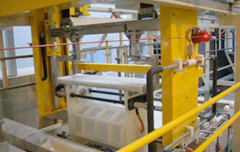Electrolytic treatment is a common method to remove impurities in electroplating industry. Electrolytic treatment is also an electroplating process, but it is not for the purpose of obtaining a good electroplating layer, but for the purpose of removing impurities (or adjusting the component content of the plating solution). The difference is that instead of hanging parts on the cathode, it is an electrolytic plate (also known as false cathode) made by hanging to remove impurities. Under the condition of power on, the impurities are deposited, clamped or reduced to relatively harmless substances on the cathode electrolytic plate. In a few cases, electrolytic removal of impurities is also carried out on the anode, so that some impurities that can be oxidized can reach the anode and be oxidized into gas or become relatively harmless substances when energized.
1、 Electrolysis is suitable for removing impurities that are easy to remove or reduce their content on the electrode
Electrolysis is applicable to impurities that are easily removed or reduced by oxidation or reduction on the electrode. The impurity ions with positive potential are more harmful and easy to be removed by electrolysis; On the contrary, the harm of impurity ions with negative potential is less.
2、 Selection of electrolytic conditions
The purpose of electrolysis mentioned here is to remove impurities in the plating solution, but the removal of impurities by electrolysis is often accompanied by the discharge deposition of main metal ions in the solution. In order to improve the removal rate of impurities and slow down the deposition rate of main metal ions in the solution, we should pay attention to the operating conditions of electrolytic treatment.
3、 Requirements for electrolytic treatment
① First, find out whether the harmful impurities come from the electrolytic process: electrolytic treatment can remove some impurities, but sometimes impurities will be produced. For example, harmful impurities come from impure anode, which is still used in electrolytic treatment, so impurities will accumulate more and more with the progress of electrolytic process; If the impurities come from the decomposition of some compounds on the electrode, electrolysis will gradually increase such decomposition products. The electrolytic plating solution will not be purified continuously, on the contrary, it will not purify the plating solution. Therefore, before electrolytic treatment, necessary inspection shall be carried out to prevent harmful impurities in the treatment process.
② The area of cathode (false cathode) for electrolysis should be as large as possible: the removal of impurities by electrolysis is mostly carried out on the cathode surface, so increasing the cathode area can improve the efficiency of removing impurities n. At the same time, in order to electrolytic remove different impurities or the same impurity in the plating solution at different current densities, the cathode for electrolysis is required to be made into concave convex surface (such as corrugated shape), which can improve the effect of electrolytic treatment. However, the recesses on the cathode should not be too deep to prevent impurities from depositing or reducing in these parts due to too low current density.
③ In the electrolysis process, the cathode should be brushed regularly: since the electrolysis treatment time is generally long, loose deposits may be generated on the cathode during the long-term electrolysis process, and its falling off will contaminate the plating solution again. Therefore, after electrolysis for a period of time, the cathode should be taken out and brushed, and the loose or bad deposits on the cathode should be brushed off before electrolysis.
④ Before electrolytic treatment, it is best to make a small test to estimate the effect and time of electrolytic treatment: some impurities are difficult to remove by electrolytic treatment. If electrolytic treatment is adopted blindly, it may take a long time to restore the plating solution to normal.
Due to the small amount of plating solution taken in the small test and the total amount of impurities, it is often possible to see whether the electrolytic treatment is effective in a short time after a sufficient amount of electricity is introduced. For example, take 2L faulty plating solution, hang a cathode (corrugated shape) of about 2dm2, the current is 2a, the plating solution is basically improved after electrolysis for 4h, and the plating solution returns to normal after 5h. The small test shows that for each liter of faulty plating solution, the plating solution can return to normal after 5A · h power is applied.








 Dec. 20, 2019
Dec. 20, 2019 





